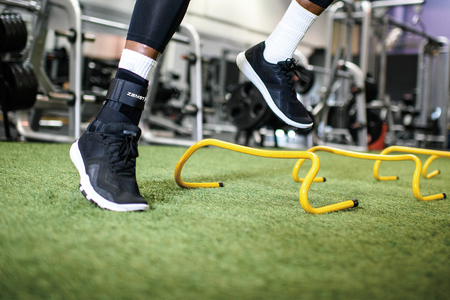With the increasing intensity of competitive sports these days, it is important to recognize the different types of heat illness, their signs and symptoms, and preventative measures that can be taken. In doing this as an athlete, teacher, coach, or sports medicine professional, you are one step up ahead of the very serious effects that heat illnesses can bring.
When an athlete is working out, his or her body’s temperature increases, & sweating is the way the body can cool itself down. But as the athlete sweats, they’re loosing essential body fluid & electrolytes. If they don’t replenish these fluids and electrolytes, dehydration can occur causing an increased risk for any of the following heat illnesses.
Heat Rash – aka prickly heat. A benign skin rash or irritation as a result from excess sweating without evaporation.
Heat Cramps – muscle pains or spasms during excess exertion due to dehydration and loss of electrolytes.
Heat Syncope– aka fainting. When the athlete is performing rapid, physical activities during over exposure to heat. Typically occurs due to pooling of blood in the extremities.
Heat Exhaustion -an illness that precedes a heatstroke; symptoms include heavy sweating, pale skin, rapid breathing, a fast & weak pulse with a core temperature is typically around 102° F.
Heat Stroke -a life-threatening illness in which body temperature may rise above 106° F. Symptoms include shallow breathing, dry and hot/flushed skin, a rapid & strong pulse, and dizziness sometimes leading to unconsciousness or death.
Dehydration Warning Signs
- Noticeable Thirst
- Muscle Cramps or spasms
- Excessive sweating
- Weakness
- Decreased Performance
- Nausea
- Headache
- Fatigue
- Lightheaded feeling or dizziness
- Difficulty paying attention
- Loss of Consciousness
Steps to Prevention
- Comprehensive health history
- Acclimatization(getting used to environment over time)
- Consume water before, during, and after activity, even if you are not thirsty
- Consume electrolyte driven drinks or tablets
- Rest in the shade to cool down
- Weight tracking for summer camps/pre-season, no more than 3-5% loss of body weight
- Wear light-colored & breathable clothes & hats
- Keep an eye on fellow workers/team mates
- Well balanced & complete diet
- Routine temperature and humidity readings
Jessica M. Thomas MS, ATC, CHC
http://kendrickfincher.org/signs-of-dehydration-2/
http://www.cdc.gov/extremeheat/warning.html
Prentice, William. Arnheims Principles to Athletic Training, 11th edition, p. 149-55.






